 Ania Szremski
Ania Szremski
In PS1’s show of the artist’s sculpture and video works, a joyful perseverance of the human spirit is on abundant display.
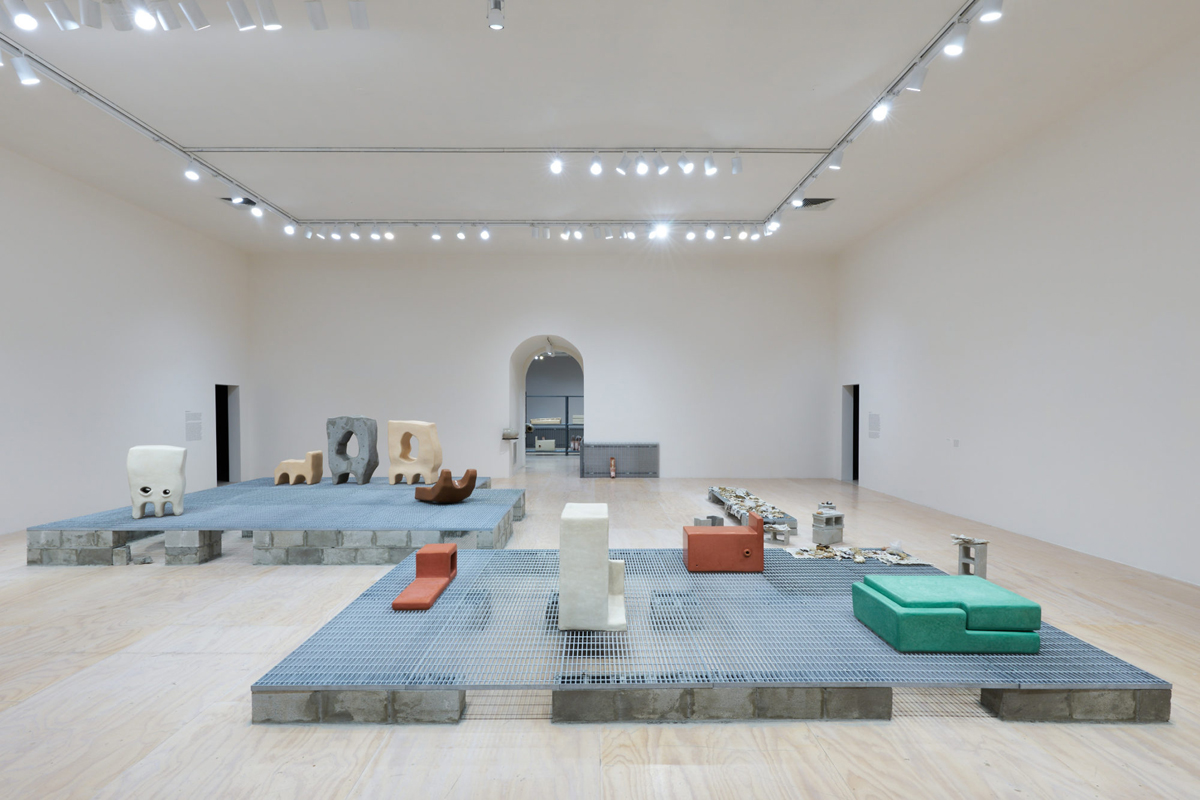
Jumana Manna: Break, Take, Erase, Tally, installation view. Courtesy MoMA PS1. Photo: Steven Paneccasio. Pictured, far right, on grate: Sandwich (Cache Series), 2022.
Jumana Manna: Break, Take, Erase, Tally, organized by Ruba Katrib, MoMA PS1, 22-25 Jackson Avenue, Long Island City, New York,
through April 17, 2023
• • •
The abstract sculptures that take center stage in Jumana Manna’s solo show at PS1, Break, Take, Erase, Tally, are beamingly charismatic. This photogenic collection of torso-size ceramic objects coated in plaster with tawny, coral, eggshell, and fern pigments seem to fully know they are dusted with the special magic that commands desire for proximity, and they are quite smug in their allure. There are nine in the main gallery (though three especially toothsome creamy and concrete structures count as one work, Family, 2022), ranging in date from 2018 to last year, all part of the artist’s Cache Series.
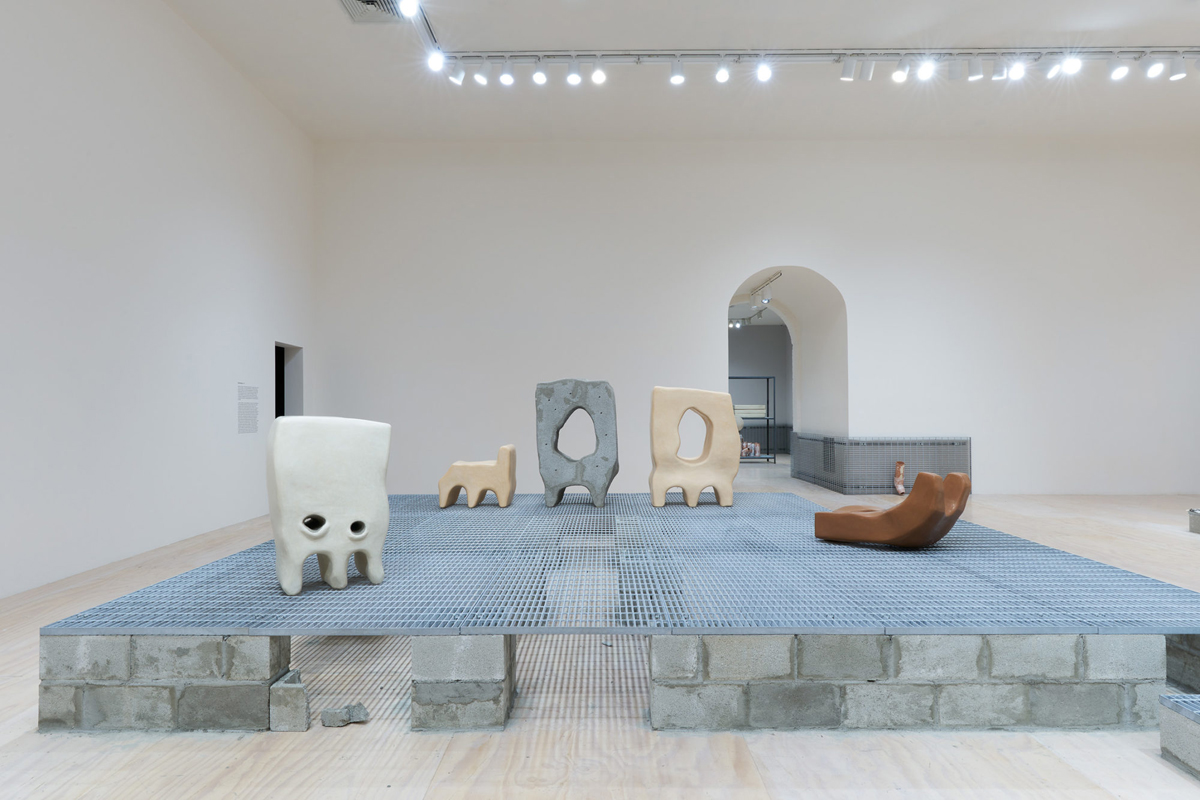
Jumana Manna: Break, Take, Erase, Tally, installation view. Courtesy MoMA PS1. Photo: Steven Paneccasio. Pictured, left: Ghost (Cache Series), 2022. Center: Family (Cache Series), 2022.
They are sometimes pronouncedly architectural (Red Cube with Ledge, 2022) and sometimes lean more toward the biomorphic (Ghost, 2022), but all of them are at least a little bit of both, like building blocks come alive or blobby beings fixed into furniture. They appear solid but at the same time manage to convey that they could be spongy, or maybe sliceable—perhaps because of all those rounded corners, or how they seem to stand a little off-balance in the way only a hollow thing can, or the emphatic, naive four-sidedness of their volumes. I wanted to take a foamy bite out of the parakeet-colored Sandwich (2022), so pleased I was by how snugly its two planes interlock to form one cohesive rectangle. I wanted to sit on the benchlike body of the littlest Family member, with its wobblily dental legs, and pet its suggestion of a rounded armrest.
Sadly for me, if happily for the security guards, I couldn’t get too close to them, though. The works are all arranged atop significantly portioned metal grates placed on cinder blocks. You can get fairly close, but that segregating metal platform (looking as coolly industrial and uniformly mass-manufactured as Manna’s sculptures are obviously, warmly made by hand), ends up restricting your access with its inviolable perimeter.
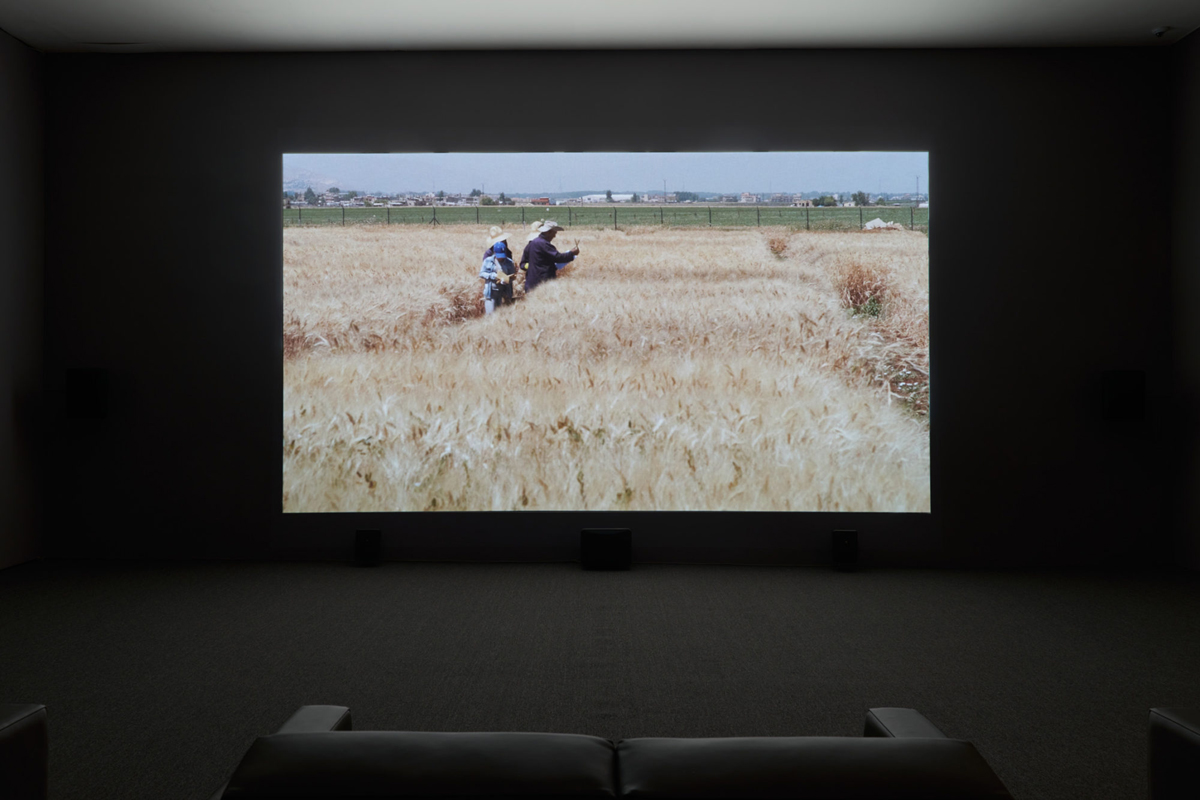
Jumana Manna: Break, Take, Erase, Tally, installation view. Courtesy MoMA PS1. Photo: Steven Paneccasio. Pictured: Wild Relatives, 2018. HD video, 63 minutes 55 seconds.
This dynamic between artwork and support sets up the foundational series of tensions structuring Break, Take, Erase, Tally: the industrial pulling at the organic, spatial constrictions jostling with motility, bureaucratic aesthetics pushing against the animations of imagination, frustration spoiling joy (but also vice versa). These pressures run through the exhibition’s dreamily gorgeous, roughly hour-long, essayistic films: Wild Relatives (2018) and Foragers (2022), shown in screening rooms to the left and right, respectively, of the main gallery.

Jumana Manna, Wild Relatives, 2018 (still). HD video, 63 minutes 55 seconds. Courtesy the artist, Brief Histories, and Hollybush Gardens.
The Cache sculptures further ally with the films in that all of them are based, thematically, on the unit of the seed. You see, wall text explains that the Cache Series is formally inspired by a type of vessel, the khabya, traditionally used for storing grains in rural homes across the Levant, now rendered nearly obsolete by refrigeration and state-centralized grain silos. Embodying a specific type of personal, family-scaled, consumption-conscious approach to cultivation and preservation, the form is a poignant counterpoint to the complex multinational infrastructures of seed storage featured in Wild Relatives. This film captures a matrix of connections between people and plants in Lebanon and those on the Arctic archipelago of Svalbard—location of the Global Seed Vault, buried far below the permafrost, where sealed bins of the world’s seeds lie in wait of aboveground disaster. Well, lay in wait; humanity had to make its darkly historic first withdrawal from the vault in 2015, after an international agricultural research center based in Aleppo was forced to relocate, due to the Syrian Civil War, to Lebanon. Thanks to the Svalbard seeds, the institution began replanting copies of its former crops, with the labor, the film appears to show, of young Syrian refugees, while continuing its research into genetic manipulation of plant DNA.
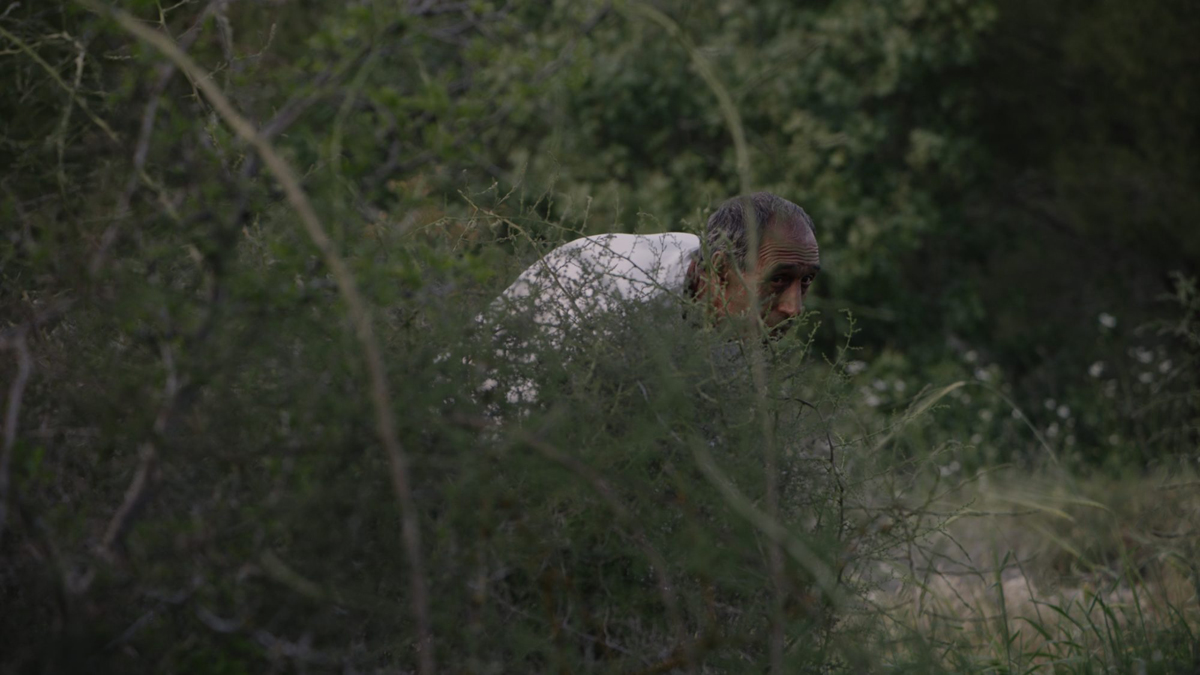
Jumana Manna, Foragers, 2022 (still). HD video, 63 minutes 34 seconds. Courtesy the artist, Brief Histories, and Hollybush Gardens.
Different mechanisms of human/plant control feature in the new film, Foragers, which was shot in the Golan Heights, the Galilee, and Jerusalem, and follows Palestinians discreetly hiking, backs bent, over hills and down valleys to forage for herbs and vegetables, especially za’atar (wild thyme) and ’akkoub, an artichoke-like thistle that is a mainstay of Palestinian and northern Levant cuisine—and both of which the Israel Nature and Parks Authority has ruled illegal to pick in the wild, claiming the plants are facing threat of extinction. Violators are subject to punishing fines and up to three years of imprisonment; meanwhile, Israeli kibbutzim have taken over sanctioned cultivation of these plants, selling their farmed products back to the Palestinians who are forbidden from picking their own.

Jumana Manna: Break, Take, Erase, Tally, installation view. Courtesy MoMA PS1. Photo: Steven Paneccasio. Pictured: Foragers, 2022. HD video, 63 minutes 34 seconds.
These descriptions of Manna’s films are by necessity brief and schematic, but it would be difficult to do them justice even in a longer essay—though they are quietly and slowly plotted, they course so deeply with story, their details dazzle so brightly with meaning, that they resist containment in summary. Since I have no choice but to summarize, though, I think the most vital thing I took from them was their feeling—I was surprised that, in the rich textures of their affects, I did not find despair, though I did find unexpected moments of true happiness. The global cataclysm of climate change is inevitably intermingled with the necro-nationalist politics of these narratives, and I think this is the first example of “climate-change art” that did not leave me feeling numb, scared, or chastised. Climate catastrophe is a subject that I usually spend enormous mental energy on ignoring, or it sends me into sublime despondence, and I was never able to grasp why some say this kind of hopelessness is a luxury. How could you not feel that way, after all? Here, though, for once, I saw something like an example of how to be otherwise; witnessed the potency in resolute and mischievous perseverance.
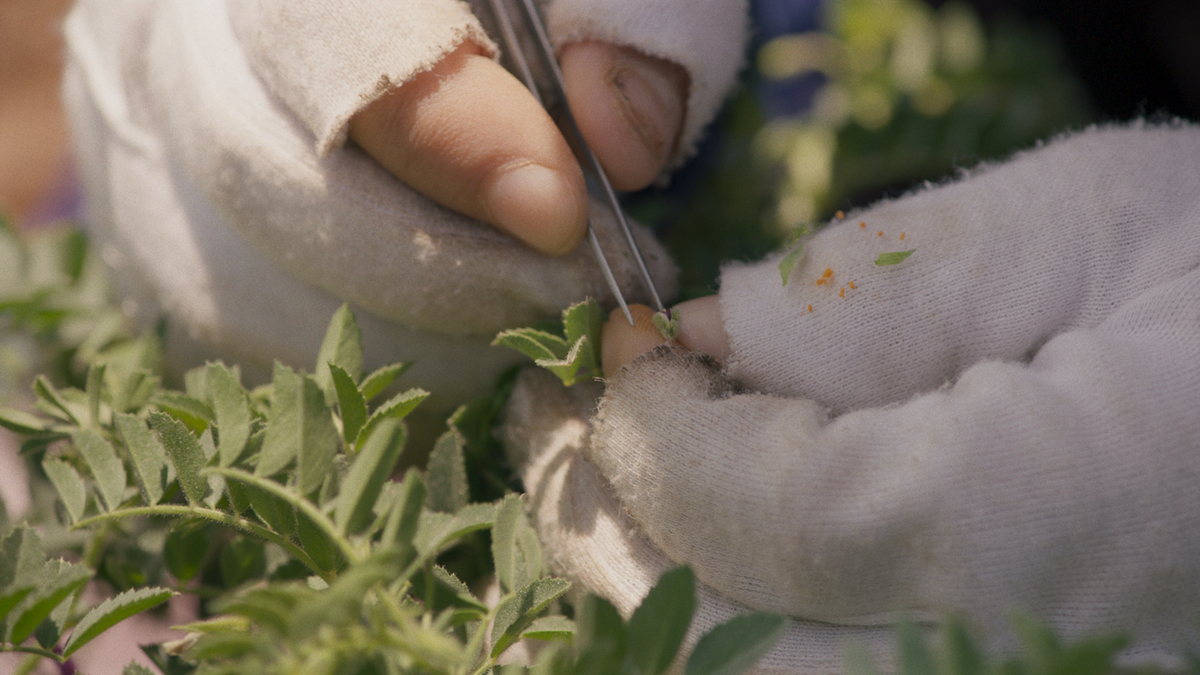
Jumana Manna, Wild Relatives, 2018 (still). HD video, 63 minutes 55 seconds. Courtesy the artist, Brief Histories, and Hollybush Gardens.
In Wild Relatives, a small-scale organic farmer, himself the foil to the agricultural research center, scratches away some soil on his land and gathers two wriggling pink worms in his palm. “These are such happy worms!” he exclaims, so proud and pleased with the health of this rich earth. Toward the end of the film, the girls who sow the fields throw off their sneakers and start dancing in the dirt to a dabke beat, their hearts suddenly weightless. In Foragers, in scripted scenes between the persecuted plant-pickers and Israeli authorities, the former are often hilariously nimble in their defiance of the unjust and arbitrary law. The criminalization of the practice seems to make the foraging perhaps even more pleasurable; we see the artist’s grandmother, mother, and aunts savoring a delicious-looking, illegally sourced plant-based lunch, laughing with every bite.
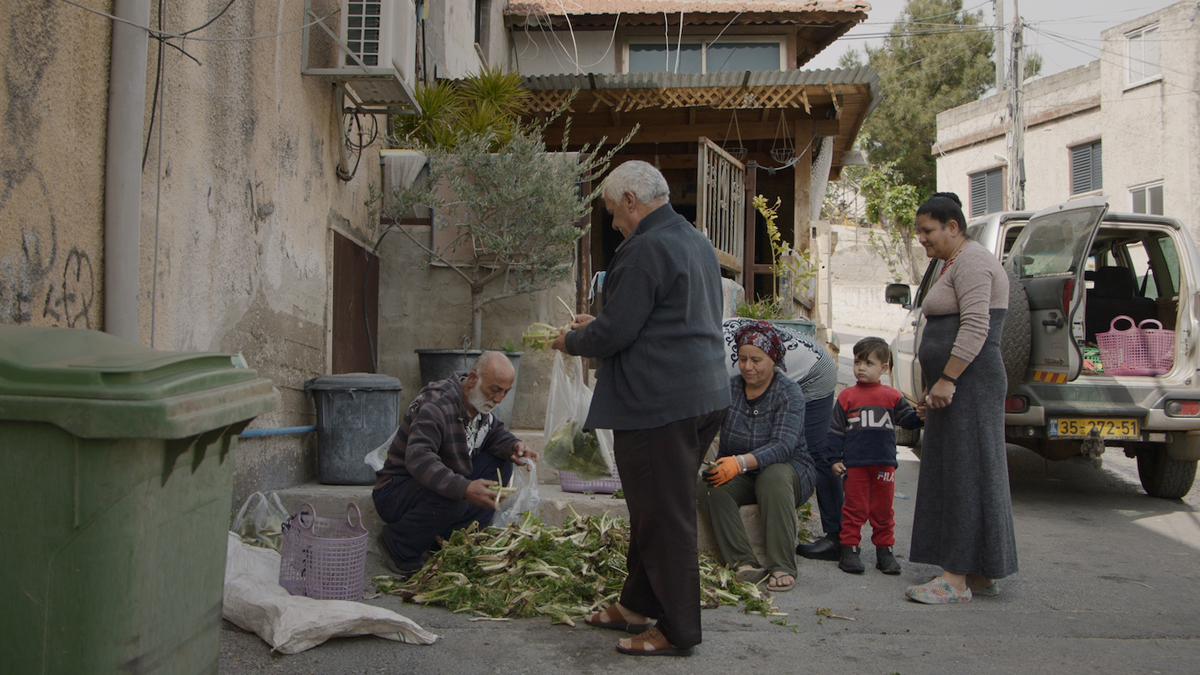
Jumana Manna, Foragers, 2022 (still). HD video, 63 minutes 34 seconds. Courtesy the artist, Brief Histories, and Hollybush Gardens.
All these images of resourceful human creativity generate a productive effervescence of spirit, as does witnessing Manna’s own creativity. There’s something about how the works in the Cache Series are more like second-cousin variations on an original, instead of nostalgically attempting to reproduce something lost—and how their forms were finished through a process of invention—that also contributes to this optimistic feeling; there’s something about the resulting charisma of these objects that primes the brain to open in that way only art can nudge it to. What Manna calls her “exercises in imagination” seem to show, to me, is that there is already so much possibility, here, happening already—I had been so distracted by my own despair I had simply failed to notice.
Ania Szremski is the senior editor of 4Columns.